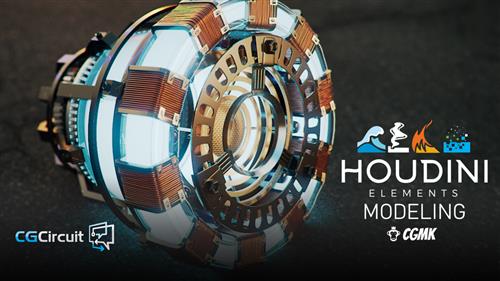Video: h264, yuv420p, 1920×1080, 1999 kb/s, 29.97 fps(r) | Audio: aac, 48000 Hz, 2 channels, s16, 93 kb/s
Genre: eLearning | Duration: 2hrs+ | Language: English | File size: 2.1 GB
In this Houdini Essential series, we are going to take a look at rendering realistic looking oceans and whitewater.
We will learn how to create custom shaders from scratch to effectively render our ocean using mantra in a photo realistic manner. We will talk about the importance of environment lighting. This will be followed by taking a look at the shader for whitewater and different pscale techniques. We will also setup custom AOVs for our ocean and whitewater renders.
Last but not the least, we will take our renders in Nuke for deep compositing where we will take a look at shuffling of passes, deep holdouts, colour correcting and 2D camera shake.
This course has been designed for intermediate to advanced Houdini users. A basic knowledge of ROPs and rendering in general is needed even though we will be creating everything from the scratch.
Upon finishing this course, an artist will be very familiar with the process of creating realistic looking custom shaders and deep comping them using Nuke.
Course Structure
Chapter 1 – SCENE SETUP
Cache Prep – Setting up our new geometry nodes with object merges to streamline the process for rendering.
Mantra – Setting up basic mantra nodes for all the elements.
Lights – Setting up our dome light in preparation for the shader.
Chapter 2 – SHADING AND RENDERING
Water Shader – Setting up a custom ocean shader.
Mantra Image Planes – Setting up our image planes and AOVs for our ocean render. This will include the velocity and vorticity passes.
Water Bed – Setting up our custom water bed for realistic refractions.
Cliff Geo – Applying textures to the cliff geometry with bump and displacements.
Ship Geo – Applying textures to the spaceship geo with specular maps.
Phantom Objects – Making sure that our water render reflects cliff and ship geo.
Wet Map – Creating a wet map pass from scratch to use it in compositing later.
WhiteWater Pscale – Understanding the concept of pscale for particle rendering.
WhiteWater Shader – Creating a custom shader for whitewater points and setting up mantra and lights for it.
Chapter 3 – DEEPS AND COMPOSITING
Deeps Rendering – Understanding and setting up deeps for all our mantra renders in Houdini so we can use them in Nuke to do deep compositing.
Deeps and Shuffle- Understanding the basic concepts of deep renders and shuffling out different render passes inside Nuke
Cam 1 – A run down of the Nuke setup to learn an efficient way of compositing heavy fluid scenes from camera 1.
Cam 2 – A run down of the Nuke setup to learn an efficient way of compositing heavy fluid scenes from camera 2.
Homepage
https://www.cgcircuit.com/tutorial/houdini-essentials---flip-rendering
DOWNLOAD FROM UPLOADGIG.COM
DOWNLOAD FROM RAPIDGATOR.NET
DOWNLOAD FROM NITROFLARE.COM




